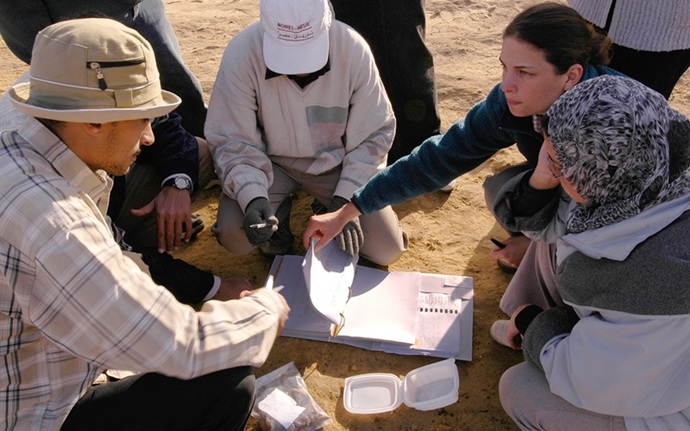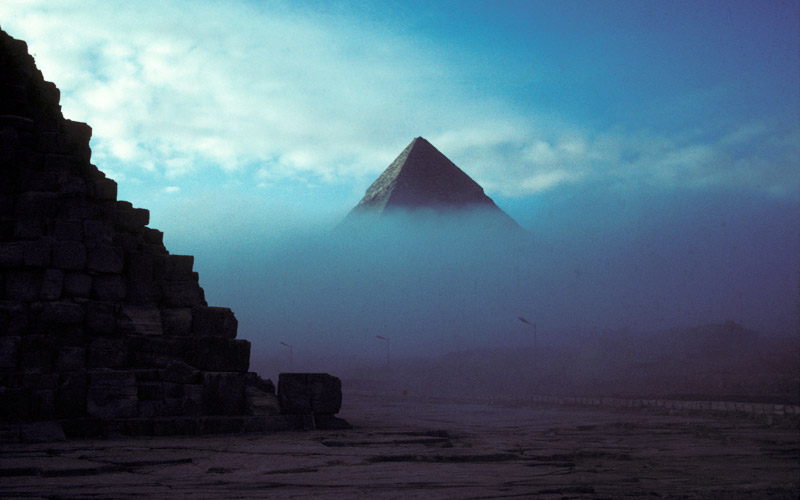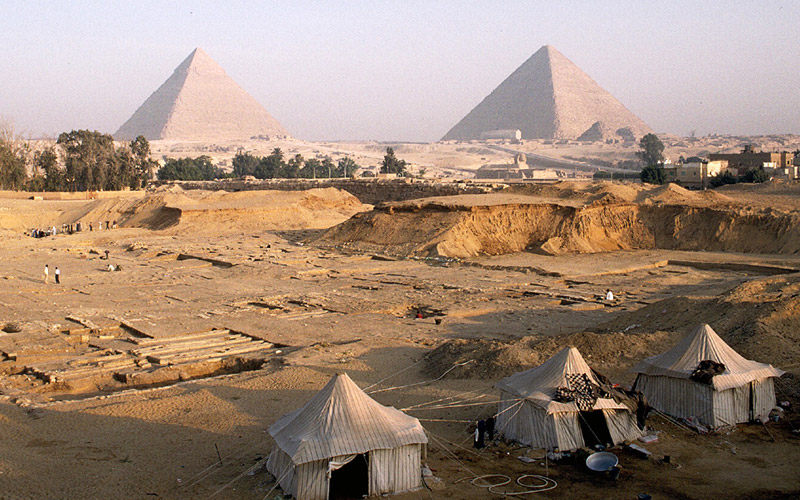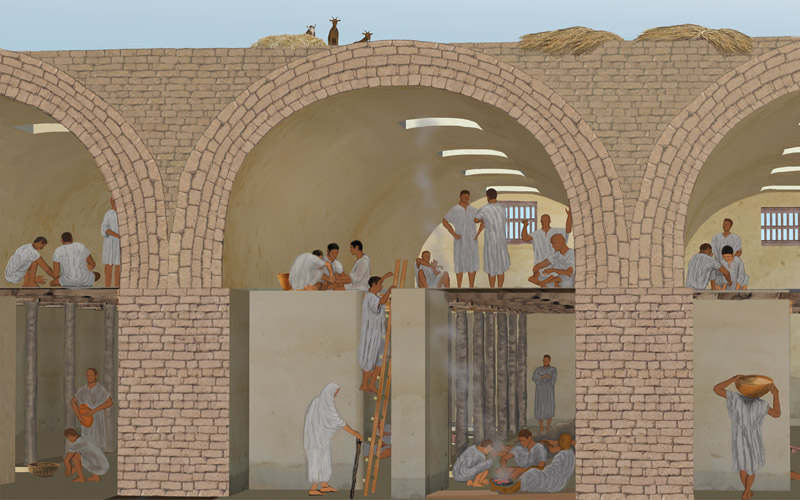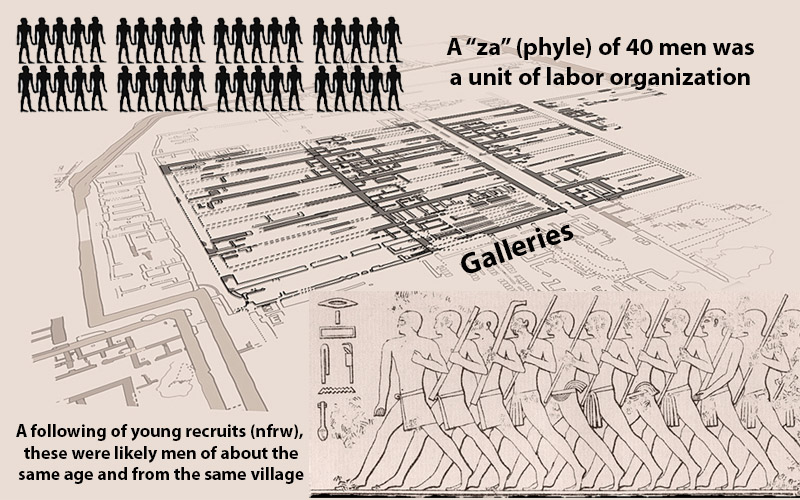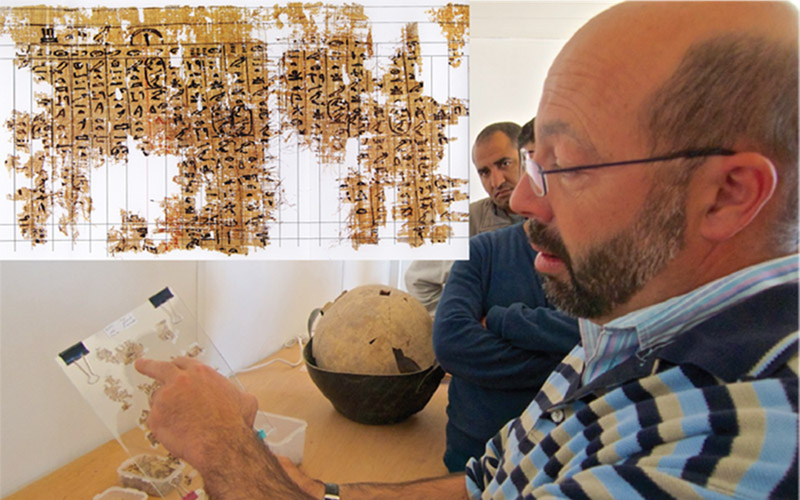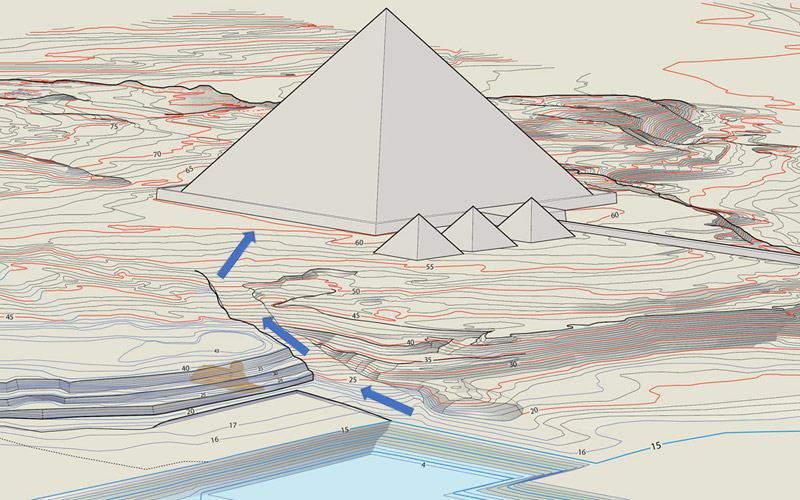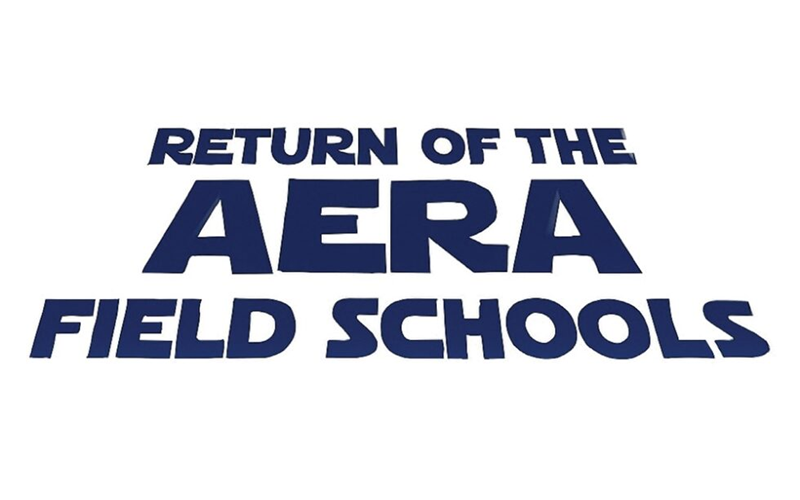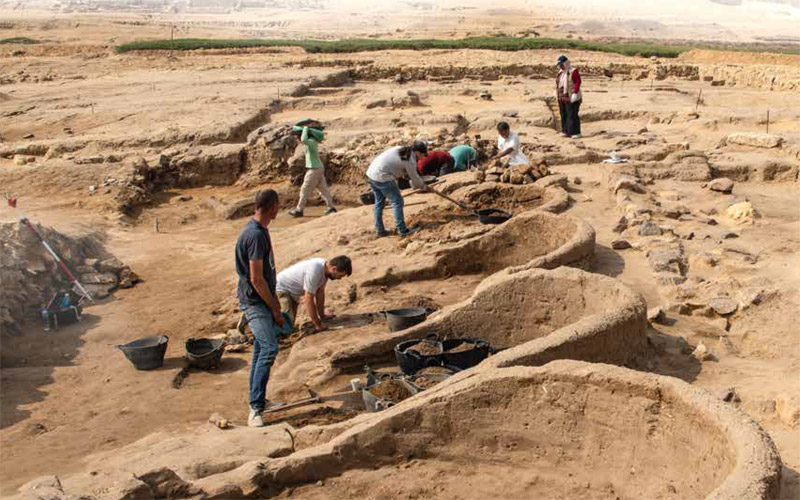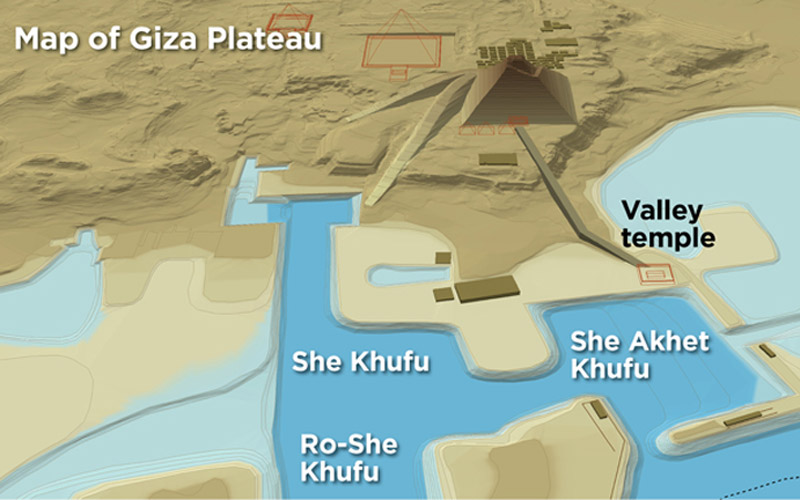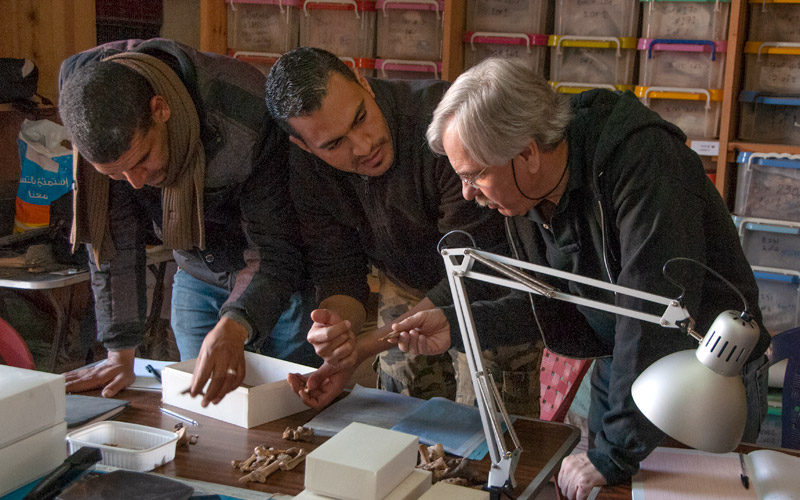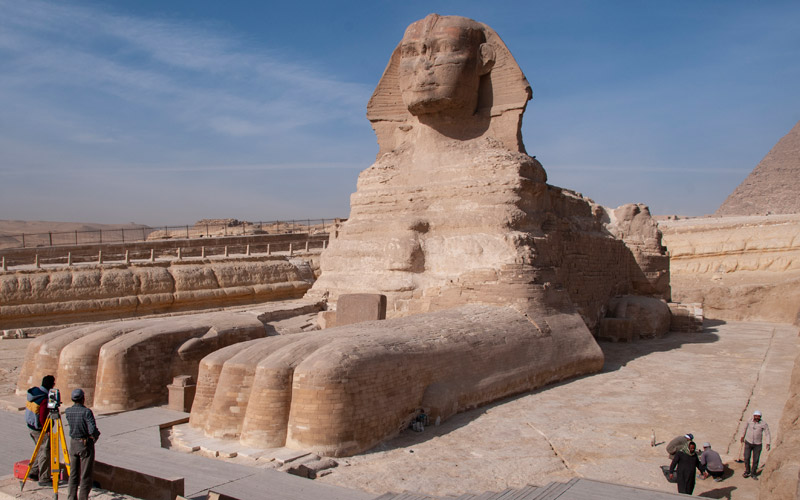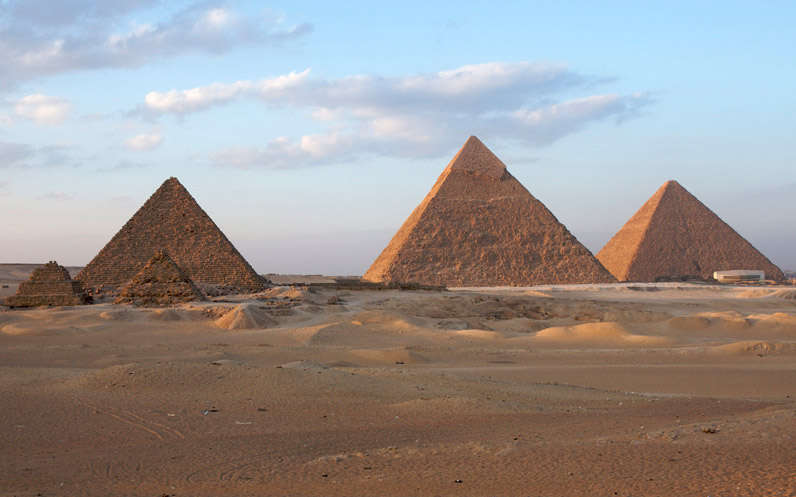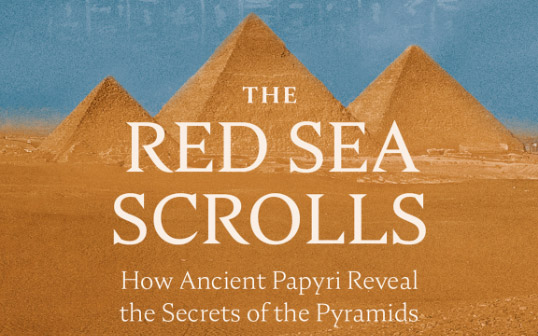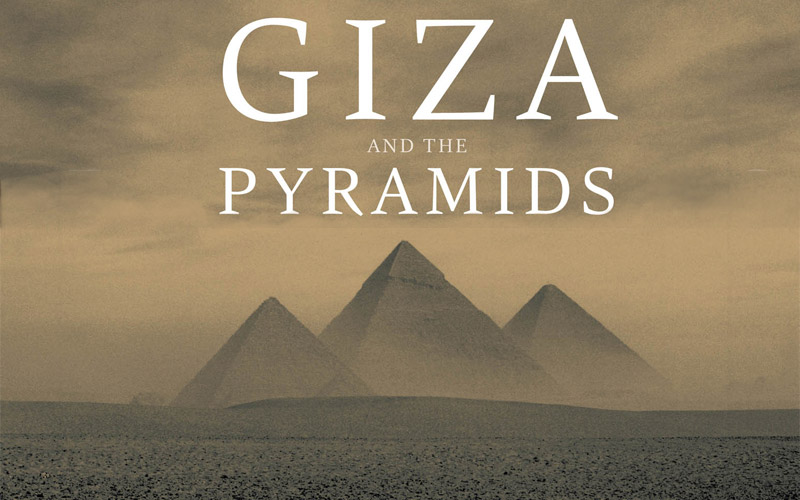Ancient Egypt Research Associates
About AERA
Learn more about AERA, our team, and our work in Egypt.
Fieldwork
Explore our excavations on the Giza plateau and across Egypt.
Training
Our field schools help train the next generation of Egyptian archaeologists.
Publications
Browse all our publications and download copies of our recent findings.
News
The latest news from our excavations in Egypt.
Join to help us explore further!
The Return of the AERA Field Schools
We are excited to relaunch AERA’s Archaeological Field School at the Lost City of the Pyramids, the site that once housed the workers and administrators responsible for constructing the pyramids.
Our field schools offer archaeologists from Egypt’s Ministry of Antiquities and Tourism invaluable hands-on training in scientific excavation. The Ministry has specifically requested that AERA resume this essential program. Starting our Field School program again though takes a pyramid of people—research scientists, students, professional archaeologists, drivers, cooks, staff, and more. We need your support to make it happen!
AERA field schools embed training with research. We never make work up just to teach. The Beginners Field School will excavate craft production areas located along the Lost City’s southern harbor, including Egypt’s oldest known faience production area, copper-working facilities, and an alabaster workshop. We are thrilled to begin this new series of large-scale excavations and field schools at the Giza plateau, which your generosity will bring to life.
Over an eight-week intensive excavation season, students will work with professional archaeologists to learn the principles and practice of stratigraphic excavation and how to document and preserve information. Click here for more information about the field school.
Your tax-deductible donation supports education and world cultural heritage at one of Egypt’s most iconic locations. It is an investment in the future of Egyptian archaeology.
Sign up for our email newsletter
Who Built the Pyramids?
Who built the pyramids and how did the Pyramids help to build Egypt? These questions have driven our research at Giza for over 30 years.
We know the names of the kings who had the Giza Pyramids built: Khufu, Khafre, and Menkaure. Their monuments convey their power and the technical sophistication of their artisans, but tell us very little about the masses of people who did the actual work of building the pyramids 4,600 years ago.
Estimates for the number of people required to build the pyramids range into the tens of thousands—equal to the populations of the earliest cities. But who were these pyramid workers? Where did they live? What was their life like? In order to answer these questions, we realized we needed to find the pyramid builders’ city.
How do you find a lost city? We looked to the landscape. After three years of mapping and model building, everything we found pointed to a site south of the Sphinx, near a large stone wall called the Heit el-Ghurab (or “Wall of the Crow” in English). So we started to dig and in 1988 we discovered the Lost City of the Pyramids, a massive urban settlement where people lived and worked while constructing the Giza pyramids.
Today we continue to work at the Lost City of the Pyramids, as well as the Great Pyramid, Sphinx, and the priests’ towns associated with the tombs of Pharaoh Menkaure and Queen Khentkawes.
Use the slideshow at the left to or visit our Fieldwork or Publications pages to learn more about our work.
Featured News and Articles
AERA's Archaeology Field Schools
With your support, we are excited to relaunch AERA’s Archaeological Field School at the Lost City of the Pyramids.
Our field schools offer archaeologists from Egypt’s Ministry of Antiquities and Tourism invaluable hands-on training in scientific excavation. We are thrilled to begin a new series of large-scale excavations and field schools at the Giza plateau, which your generosity will help bring to life.
AERAgram Volume 23
While the most recent AERAgram is only available to our members, previous issues are free to download. The most recent issue available online includes:
- Silos 2022: End Game at Heit el-Ghurab?
- A Tale of Two City Districts: A New Story at SWI
- Copper at Giza
- Art and Accounting of the Heb Sed: Sculptures as accounting records
- Water from Below, Water from Above: History & Climate
AERA in the News
Our work has been widely chronicled in documentaries, lectures, and by the press.
Find out more about our work in popular articles, podcasts, and videos including:
- the National Geographic documentary “Khufu’s/Cheops Palace”
- the Nova documentary “Decoding the Great Pyramid”
- Journeys of the Pyramid Builders, the cover story of the July/August 2022 issue of Archaeology magazine
Field School: Learning Bone
We believe the best way to train students is through a hands-on approach, embedding them in our current research projects. Here two of our archaeozoology students share their first-hand experiences studying ancient animal bones in our lab on the Giza plateau.
Who Built the Sphinx?
Our study of the Sphinx and the Sphinx Temple lead us to believe that Khafre created most of the Sphinx.
However, Khufu might have started it.
Featured Books
AERA Object Typology
This richly illustrated book is intended to be used as a reference work for archaeologists working on other Egyptian (Old Kingdom) settlement sites.
This representative sample of everyday tools was selected from our massive collection and is the result of work on the material culture at Giza by a large team of specialists over more than 30 years.
The Red Sea Scrolls: How Ancient Papyri Reveal the Secrets of the Pyramids
Pierre Tallet’s discovery of the Red Sea Scrolls—the world’s oldest surviving written documents—was one of the most remarkable moments in the history of Egyptology.
These papyri, written some 4,600 years ago, and combined with Mark Lehner’s research, changed what we thought we knew about the building of the Great Pyramid at Giza.
Giza and the Pyramids: The Definitive History
In this definitive book, Mark Lehner and Zahi Hawass provide insights into the history of the Giza plateau based on over 40 years of excavation and study.
The monuments are brought to life through hundreds of illustrations, including photographs of the monuments, excavations, and objects, as well as plans, reconstructions, and images from remote-controlled cameras and laser scans.

